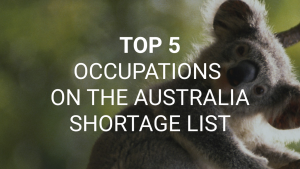Cost of Living in Australia vs UK: What’s Cheaper in 2025?
 20.05.2025
20.05.2025
 10 mins to read
10 mins to read

Is it really worth packing up your toolbox and moving across the world for a better life?
If you’re a technician working in the automotive industry, this question may be more relevant than ever in 2025.
With growing global demand for skilled labour, technicians are not just in high demand – they’re in control. But choosing where to work isn’t only about wages. It’s about the lifestyle that comes with the job: housing costs, healthcare, transportation and day-to-day comfort.
So where does life look better for automotive professionals right now, the UK or Australia?
This article explores what really matters: compare the cost of living you can expect in each country.
Let’s dive in.
1. Cost of living comparison UK vs Australia (2025)
Cost of living London vs Sydney
According to the Office for National Statistics (ONS), as of December 2024, the average monthly rent in London was £2,220, marking an 11.5% increase over the previous year.
Conversely, Sydney remains Australia’s priciest rental market. As of June 2024, the median weekly rent for houses in Sydney reached a record $750 AUD, translating to about $3,250 AUD monthly or £1,700 GBP at current exchange rates.
Cost of living Manchester vs Melbourne
Manchester offers a more affordable alternative within the UK. As of March 2025, the average monthly rent in Manchester is £1,310, reflecting a 9.5% increase from the previous year.
In Melbourne, the rental market is also experiencing growth. The median weekly rent in metropolitan Melbourne was $560 AUD as of December 2024, equating to approximately $2,427 AUD monthly or £1,270 GBP.
Cost of living Urban vs Regional Affordability
In both countries, regional areas offer more affordable housing options:
- UK: Outside London, the average rent is significantly lower. For instance, in the North East of England, average rents are around £667 per month.
- Australia: Regional areas also present cost savings. In regional Victoria, the median weekly rent is $455 AUD, approximately $1,972 AUD monthly or £1,030 GBP.
These figures highlight the substantial differences in housing costs between major cities and regional areas, which can significantly impact the overall affordability for skilled workers considering relocation.
UK & Australian cities comparison of living costs:
London | Sydney | Manchester | Melbourne | North East of England | Victoria |
| £2,220 | £1,700 | £1,310 | £1,270 | £667 | £1,030 |
Looking at house prices and rental costs across cities in both countries, it’s clear that housing in Australia is generally more affordable than in major UK hubs, especially when comparing London (£2,220) to Sydney (£1,700). However, when you step outside the capitals, the story changes. Manchester (£1,310) and Melbourne (£1,270) are nearly on par, while regions like the North East of England (£667) offer significantly cheaper alternatives compared to regional Victoria (£1,030).
Overall, while the UK’s largest cities still top the list for rental costs, the gap in living expenses between the UK and Australia closes and even reverses in regional areas. This highlights how lifestyle choices and where you choose to settle can greatly influence your financial comfort when moving to a new country. Whether you prioritise urban energy or regional calm, it’s worth considering how housing costs align with your goals.
If you are thinking of relocating read more about the visa process click here
2. Groceries, transport and utilities.
Weekly grocery basket comparison – general cost
Food is a non-negotiable expense but how much does it really cost to fill your fridge each week? While prices vary by region and shopping habits, the weekly grocery bill offers a useful snapshot of living in Australia vs UK costs. Here’s how Australia and the UK stack up in 2025.
Prices in the UK:
In 2025, the average UK household spends approximately £55.98 per week on groceries for an adult male and £52.13 for an adult female.
Prices in Australia:
Research indicates that the average household (2.5 people) spends $213.64 AUD per week on groceries in 2025 is approximately £111.09 GBP. Cost per person is approximately £44.44.
| Country | Weekly Grocery Cost (GBP) | Notes |
| United Kingdom | £55.98 (male) / £52.13 (female) | Based on average adult consumption |
| Australia | ~£111.09 (£44.44 per person) | Based on average household grocery spending (2.5 people) |
This quick comparison of food prices in 2025 highlights a key difference in living between Australia and the UK. On the surface, average living costs for groceries appear somewhat similar when broken down per person £44.44/week in Australia versus £52–£56 in the UK. However, this general overview doesn’t tell the whole story.
Grocery costs can vary significantly depending on spending habits, dietary choices, and where you shop. If you prioritise low-budget grocery shopping, the UK generally offers better value, especially through discount retailers and own-brand products. In contrast, Australia may prove more expensive, particularly when it comes to processed, imported, or branded items.
So while the weekly spend per person is comparable, your actual experience at the checkout might differ, especially if you’re shopping with savings in mind.
Public transportation costs in Australia & UK – general cost overview
Public transport can be a major monthly expense, and its quality and affordability often shape daily life. Here’s how the UK and Australia compare when it comes to ticket prices in their major cities.
| City | Single-Day Ticket | Monthly Pass |
| London (Zones 1–2) | £16.60 | £171.70 |
| Melbourne | £5.75 | £103.50 |
United Kingdom: Public transport especially in London tends to be relatively expensive, though it benefits from a comprehensive and reliable network. Measures like the £3 nationwide bus fare cap are designed to make travel more accessible outside the capital.
Australia: Public transport costs vary more widely. Some regions, such as Queensland and the Northern Territory, have introduced substantial fare reductions or even free travel schemes, making them particularly appealing for both residents and newcomers.
Electricity, gas, and internet bills – Australia vs the UK
When considering relocation, understanding the ongoing costs of utilities is crucial. Here’s a comparative overview of average monthly expenses for electricity, gas, and internet in the UK and Australia as of 2025.
United Kingdom
- Electricity & Gas: The average annual dual-fuel energy bill (electricity and gas) for a medium-sized household (3-4 bedrooms) is approximately £1,849, equating to about £154 per month. This estimate is based on average consumption levels and current energy price caps.
- Internet: Monthly broadband costs typically range between £8 and £15 per person in shared accommodations, depending on the service provider and package chosen.
Australia
- Electricity: Australian households spend on average between $1,500 and $2,500 AUD annually on electricity, translating to approximately $125 to $210 AUD per month. Factors influencing these costs include household size, energy consumption habits, and regional electricity rates.
- Gas: The average quarterly gas bill is around $170 AUD, which amounts to about $57 AUD per month. However, this can vary by state; for instance, South Australia reports higher averages, while Western Australia tends to have lower gas costs.
- Internet: Monthly internet expenses typically range from $40 to $70 AUD, depending on the plan and provider. Shared accommodations often divide this cost among residents.
| Utility | UK (GBP) | Australia (GBP) |
| Electricity & Gas | £154/month | ~£95–£139/month (AUD $182–267) |
| Internet | £8–£15/month | ~£21–£36/month (AUD $40–70) |
When comparing monthly utility bills, both the UK and Australia present unique challenges. In the UK, utility prices have remained relatively stable thanks to regulation, but recent energy price cap adjustments have caused noticeable increases in monthly expenses for many households.
In Australia, there’s greater variability. Utility costs can differ significantly depending on the state and household consumption patterns. While some areas benefit from lower gas prices, electricity bills can be relatively higher – especially in larger households or those with heavy appliance use.
This general overview of the cost shows that there’s no one-size-fits-all answer. Where you live, how much energy you use, and whether you’re splitting costs all play a role in your final bill. If you’re moving to a new country, it’s important to factor in monthly utility bills alongside rent and groceries to understand your real living expenses.
4. Healthcare Systems: NHS vs Medicare
When considering relocation, healthcare is a pivotal factor, not just for emergencies but for everyday well-being. Both the UK and Australia offer universal healthcare systems, yet they differ in funding, accessibility, and the role of private insurance.
United Kingdom: The NHS
The National Health Service (NHS) provides publicly funded healthcare, offering most services free at the point of use, including:
- General Practitioner (GP) visits
- Emergency treatment
- Hospital care
- Maternity services
Prescription Costs: In England, prescriptions cost £9.90 per item as of May 2025. However, prescriptions are free in Scotland, Wales, and Northern Ireland.
Private Insurance: Approximately 13% of the UK population opts for private health insurance to access faster treatment and additional services. The average monthly cost for individual coverage is around £79.62, varying based on age, location, and coverage level.
Australia: Medicare
Medicare is Australia’s public healthcare system, funded by a 2% levy on taxable income. It covers:
- GP consultations
- Public hospital treatment
- Some specialist services
- Subsidised prescription medicines under the Pharmaceutical Benefits Scheme (PBS)
Prescription Costs: As of January 2025, the maximum cost for a PBS-listed medicine is $31.60 AUD (£16.40 GBP) for general patients and $7.70 AUD (£4.00 GBP) for concession cardholders.
Private Insurance: Over 45% of Australians have private health insurance, often encouraged through tax incentives and to cover services not fully subsidised by Medicare. The average monthly premium for an individual is approximately $150 AUD (~£78 GBP), with costs varying based on coverage and provider.
| Feature | UK (NHS) | Australia (Medicare) |
| Public healthcare | Free at point of use | Subsidised, with some out-of-pocket costs |
| Prescription cost | £9.90 per item (England) | Up to £16.40 per item; £4.00 for concession holders |
| Private insurance cost | ~£79.62/month | ~£78/month |
| Private coverage rate | ~13% of population | ~45% of population |
| Access to specialists | Longer wait times in NHS | Faster with private cover or co-payment |
The UK’s NHS offers free-at-point-of-use care, but often comes with longer wait times for non-urgent treatments. In contrast, Australia’s Medicare is subsidised, with some out-of-pocket costs and a stronger reliance on private insurance to access faster or broader services.
In terms of the average cost, healthcare in the UK is more affordable upfront, while Australia generally offers quicker access, especially for those using private cover. If you’re considering private lets in either country, factor in both accessibility and cost when comparing living expenses.
5. Final thoughts on cost of living in Australia and the UK.
If you’re an automotive technician weighing a move to Australia or the UK in 2025, the decision isn’t just about take-home pay, it’s about how far that pay will take you.
Our deep dive shows clear contrasts:
- Housing tends to be more affordable in regional Australia, but the UK still offers budget-friendly options outside the city centre.
- Groceries and utilities are usually on the same level.
- Public transport is cheaper and, in some cases, even free in parts of Australia, while London remains one of the most expensive networks globally.
- Healthcare in both countries is solid, but Australia’s mixed system leans more on private insurance and co-payments, while the NHS remains mostly free (and slower).
Ultimately, the question becomes:
Do you value universal access and predictability? The UK might be your match.
Or do you prioritise sunshine, outdoor living, and a healthcare system that rewards those willing to pay a bit more? Australia might be calling.
When looking at living in Australia compared to the UK, it’s clear that each country offers different trade-offs. Some things are more expensive than in the UK, while others offer better value especially in regional areas. Whatever you choose, let it reflect not just your career goals, but the kind of life you want to live.
Sources:
https://www.ons.gov.uk/visualisations/housingpriceslocal/E08000003
https://www.dffh.vic.gov.au/publications/rental-report
https://foodfoundation.org.uk/news/food-prices-tracker-january-2025
https://au.news.yahoo.com/cost-aussies-2025-grocery-shop-052054374.html?guccounter=1
https://www.toptiplondon.com/transport/tickets/underground-tickets-travelcards
https://www.uswitch.com/gas-electricity/guides/average-gas-and-electricity-bills-in-the-uk
https://uninist.com/blog/financial-planning/average-utility-bills-uk
https://www.canstarblue.com.au/gas/average-gas-bill
https://www.mytribeinsurance.co.uk/knowledge/average-cost-of-private-health-insurance-uk
https://www.health.gov.au/cheaper-medicines/pbs-co-payment-freeze






